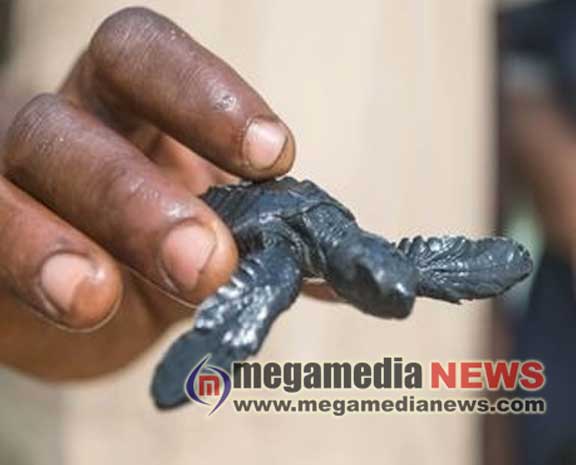Following the turtle trail in coastal Karnataka
12:55 PM, Monday, February 5th, 2018 Mangaluru: A huge number of dead olive ridley turtles washed up on the Chennai coast recently, prompting environmental activists to warn of a crisis concerning the already endangered sea-dwelling species.
Mangaluru: A huge number of dead olive ridley turtles washed up on the Chennai coast recently, prompting environmental activists to warn of a crisis concerning the already endangered sea-dwelling species.
The fact that the deaths are occurring during the peak nesting season also raises question about the conservation efforts being made as well as programmes in place to educate the fishermen community regarding the fishing techniques they use.
Imagine the sight of dead turtles lying along the beach, tangled in fishing nets and with nylon-string cuts on their body. One of the prime reasons cited for the turtle decline is the gill net, in which they get caught and suffocated to death. Inadequate action by the concerned government departments and local authorities also share the blame, alongside predation by human beings and feral animals.
Cut to the coastal region of Karnataka, the scene is not very inspiring either. The two varieties currently found along the coastal areas of the state are the olive ridley sea turtle and the green turtle, with sightings of the leatherback turtles becoming increasingly rare. Their peak nesting season is said to be between September and February every year.
During this period, the turtles migrate to the beaches to build nests and lay their eggs. Patches of the coastline covering Uttara Kannada, Udupi and Dakshina Kannada are used for marine turtle hatcheries.
“Lately, a number of mini harbours have come up along the state’s coastline, disrupting the natural shifting of sand, which in turn affect the breeding of the marine creatures.
Although awareness campaigns are made by the forest department and local NOGs, there is a lack of proper monitoring system or survey to keep an eye on the increase or decrease of the turtle population. Also, turtle excluders are too expensive a device for the local fisherfolk, while conservation efforts also need a boost,” says Rakesh Soans, the President of FSL India, who spearheads turtle conservation efforts along the 60 km stretch from Kota to Bayandur.
According to him, the success rate of the hatchlings is still very low. Out of say 1,500 eggs laid, some 1,200 baby turtles are hatched, with only 250 of them finally surviving. Describing turtles as an important factor for the fishing community, Rakesh says, “Turtles eat jelly fish, limiting them from preying on little fish.”
Speaking along the same lines, Kartik Shekhar, an IT professional-turned-conservation enthusiast, says, “We need a bigger campaign to save turtles. More coordination between the local authorities and NGOs can help bring about a change. Rampant commercialization of coastal areas, including homestays and resorts, as well as the use of modern trawlers and boats in the sea are together spoiling the breeding habits of this creature.”
“The sudden crisis prompted by turtle deaths in Chennai could be a little misleading, as recent studies have actually indicated an increase in India’s turtle population.
Of course, that doesn’t dwarf the fact that the country’s western coastline too needs more focus. Although, in general, turtle nesting is lesser on the western coast, it does have important marine habitats, which are currently under threat due to sea walls, ports and other developments. Poor understanding among people is also a factor that dampen conservation drives.
But things can be improved by maintaining a healthy marine ecosystem and through holistic coastal preservation efforts that don’t concentrate on one endangered species alone,” says Kartik Shanker, Director of the Ashoka Trust for Research in Ecology and the Environment.
Simillar Posts
Warning: count(): Parameter must be an array or an object that implements Countable in /home/megamcaq/public_html/wp-content/plugins/post-plugin-library/common_functions.php on line 357
- None Found
Leave a Reply
© Copyright 2008 www.megamedianews.com All Rights Reserved. Privacy Policy








 Posted in
Posted in  Tags:
Tags: 



